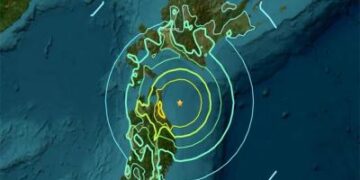Highlights:
- NASA confirmed a newly discovered “quasi-moon” named 2025 PN7 that will orbit Earth until around 2083.
- 2025 PN7 is small, about 18–36 meters wide, and very dim, making it hard to detect.
- Its distance from Earth ranges from 4 million km to 17 million km, posing no impact risk.
New Quasi-Moon Discovered
NASA announced that a space rock called 2025 PN7 has been officially classified as a “quasi-moon,” a rare type of object that travels almost exactly in sync with Earth. While not a true moon, it follows an Earth-like orbit around the Sun, appearing to shadow our planet.
“সাধারণ ডিম বিক্রি করে আমরা কীভাবে ১৫ লক্ষ কাস্টমার এনেছি—এই বইয়ে আছে তার বাস্তব কাহিনি!”
The University of Hawaii team discovered 2025 PN7 using the Pan-STARRS observatory on the Haleakala volcano. The object was observed on August 29, and archival data show it has been following a similar orbit for decades.
Size and Visibility
Scientists estimate the quasi-moon is about 18 to 36 meters wide, roughly the height of a small building.
Its brightness is about magnitude 26, far too faint to be seen with amateur telescopes.
“আপনার ব্যবসা এখন অনলাইনে— Storola-এর সাথে সহজ ও স্মার্টভাবে!”
Distance and Safety
2025 PN7 comes as close as 4 million kilometers to Earth (ten times farther than the Moon) and can drift out to 17 million kilometers. NASA has confirmed that it poses no known impact risk.
Read More: “My HSC results were among the worst of my academic life”: Shafiqul Alam
A Rare Opportunity for Scientists
The discovery allows astronomers to study a small near-Earth object up close. Models suggest that 2025 PN7 has been orbiting near Earth for decades and could remain in this orbit until about 2083.
It joins a small group of other known quasi-satellites of Earth, including:
- 164207 Cardea
- 469219 Kamo‘oalewa
- (277810) 2006 FV35
- 2013 LX28
- 2014 OL339
- 2023 FW13
Kamo‘oalewa, another quasi-moon, is believed to be an ancient fragment of the Moon and is a target for China’s Tianwen-2 mission, which plans to collect samples from the object in 2027.
Source: The Times India


















